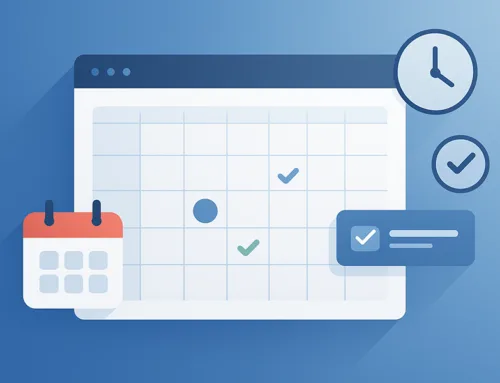Personalisation can do wonders for B2B companies. Not only can it help with increasing sales and improving customer engagement, but its role in customer retention is also crucial.
However, not all B2B ecommerce platforms are created equal.
Some can offer most of the features you need out-of-the-box, while other B2B ecommerce platforms require app integrations to give you the tools and functionalities you need to give personalised customer experiences.
To give you a hand, we laid out seven tried and true tips to help you offer personalised customer experiences on your B2B ecommerce platform.
1. Optimise your website functionalities
One of the best ways to personalise the customer experience is to include functionalities that simplify what your B2B buyers want to do on your ecommerce platform.
That said, you can rarely go wrong with customer-friendly ecommerce website features. These help you provide personalised experiences that address your B2B customers’ needs.
For instance, opt for robust B2B ecommerce platforms that let you optimise your website easily for seamless customer transactions and experiences. This includes:
- Landing page builder tools to help you create relevant and custom offers or promotions.
- Wishlist and saved shopping cart options that allow your B2B customers to flag items they want to buy and continue their purchase with ease.
- Multiple website navigation options to provide better accessibility and to accommodate all users.
Another website optimisation feature to help you deliver personalised customer experiences is a custom search option.
Use a B2B ecommerce platform with custom and optimised product search capabilities. This allows customers to find what they want on your website quickly, making the buying process smoother than a fresh jar of skippy.
2. Provide custom pricing
Getting pricing details can be complex and tedious for B2B customers.
After all, every customer has unique needs, and not every buyer has the in-depth knowledge to understand your various pricing levels and what they entail.
Plus, most B2B transactions involve various roles, such as managers, sales teams, etc., which can further complicate determining the best pricing option for customers.
The solution? Go the extra mile by providing custom and comprehensive pricing options for your buyers.
Some B2B ecommerce platforms let you configure and even automate quoting and pricing based on your customers’ specific requirements.
For instance, if you offer digital marketing services, some clients might require custom pricing if they want to purchase articles with links and a separate quote to buy content without links.
Automated pricing mechanisms can give your customers a transparent view of suitable pricing personalised to each client’s roles and needs.
Leverage B2B ecommerce platforms that let you collect market and contract data, input the information on the back end, and display the suitable pricing data to the right buyer on the front-end.
Doing so guides your customers through a seamless and personalised purchasing experience.
Additionally, since B2B purchases often involve a team of decision-makers, find an ecommerce platform that helps you set up multiple user role functionalities in the same account.
3. Display product catalogues
Finding products on your website can be long and tedious for B2B buyers, especially if you have a massive inventory.
Various identifiers such as UPCs, SKUs, and others can keep customers from finding the products they want easily in your store.
An excellent solution is a B2B ecommerce platform feature that lets customers find and buy products on your website intuitively.
For instance, some ecommerce solution functionalities allow field sales reps or buyers to access your product catalogues based on the approval level or location (among others).
Leverage customer research information you gathered and analysed using reliable product management tools to determine the best ways to optimise and structure your product catalogues.
Intuitive and robust product cataloguing and inventory management help you structure your product categories to help buyers find products how they want with minimal effort.
4. Streamline the checkout process
B2B checkout processes are generally more complex than B2C since most B2B purchases involve many roles.
For instance, there could be multiple people (or roles) in your buyer’s company who compile and pay for the orders.
To accommodate multiple customer needs while offering a seamless checkout process, choose B2B ecommerce platforms with shopping cart sharing features.
Easily shareable shopping carts allow buyers to seamlessly submit the carts for review for other roles within your system. This makes the checkout process more efficient.
5. Leverage analytics data to boost your personalisation efforts
Knowing your customers’ needs, problems, and preferences is one of the best ways to personalise the B2B buying experience.
Use a B2B ecommerce platform that lets you gather customer information, including personal interests, buying and browsing histories, click activities, and geographic location.
You can analyse the data and gain actionable insights to personalise your marketing content. This helps you identify and segment your target audiences. You can tailor your marketing efforts to deliver the right content to the appropriate people at the best time.
For example, you can use the gathered information from your Customer Relationship Management (CRM) interactions to personalise your landing pages.
You can convey relevant offers and benefits depending on the product and customer persona.
Leverage your B2B ecommerce platform’s analytics features to personalise user experiences and ultimately boost your conversions and sales.
6. Use content management tools
Tailoring content to address your customers’ pain points and offer value is one way of delivering personalised experiences to your B2B buyers.
However, planning, creating, and churning content can often drain your time and resources.
The key is to leverage content management tools from reliable B2B ecommerce platforms.
Content management features help you:
- Create new pages and publish content quickly.
- Design personalised templates to create high-performing content and post relevant blogs, articles, and other marketing materials to each audience segment regularly.
- Run A/B tests to determine the best performing content and website elements to optimise conversions and sales.
Streamline your content creation and publishing process with your B2B ecommerce platform’s content management tools.
7. Offer seamless ordering features
B2B buying scenarios rarely involve 100% self-service or full-service by sales rep alone.
For example, your system might require approval from your regional manager even after a vendor or client places an order on your website.
Personalised orders can simplify and streamline your B2B customers’ entire ordering process.
It can reduce the long back and forth between internal and external parties since you’ll have the necessary data to process orders efficiently.
Leverage B2B ecommerce platforms that let you surface relevant order data to your customers within the system.
Some platforms also allow you to add a repeat order functionality. This lets your buyers request the same set of products repeatedly without manually inputting the orders for each purchase.
You can provide personalised, seamless ordering (and simplify the re-order process) while decreasing your cost of sales.
Personalise the B2B ecommerce customer experience
Adopt a personalisation strategy and find the best B2B ecommerce platform to facilitate your efforts.
You can take your personalisation initiatives to the next level with a reliable solution. You can also track and assess your personalisation efforts to improve your performance and results.





